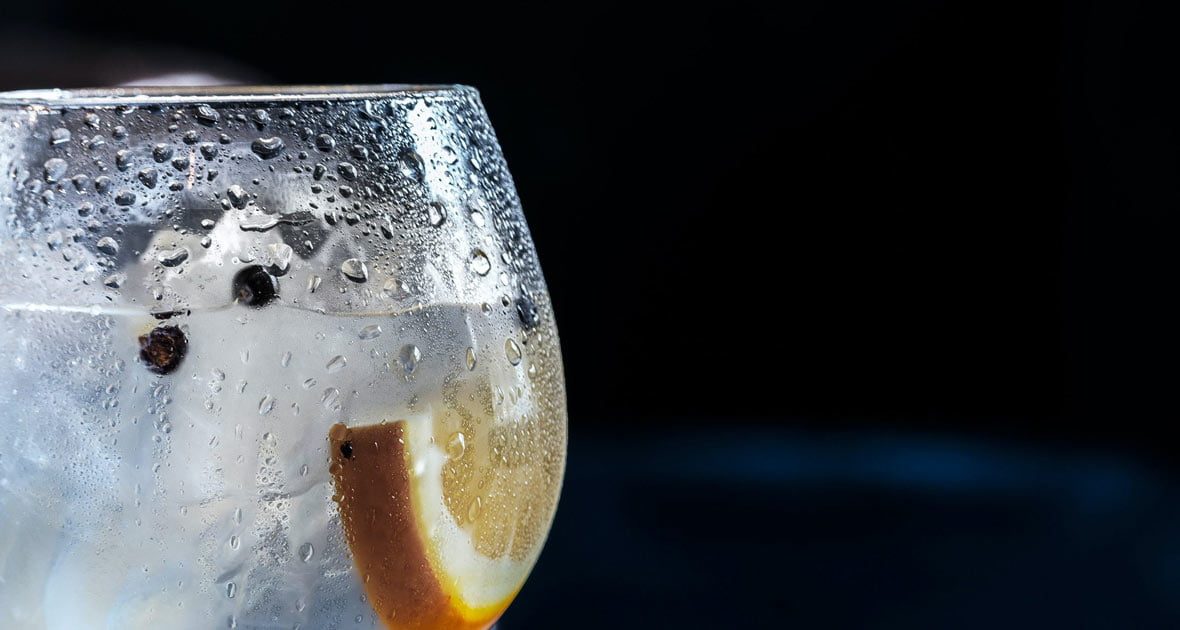If you told us in March what two items would be difficult for France 44 to procure throughout a global pandemic, pre-mixed margaritas and tonic water would have never crossed our radar. Every week is a new adventure in discovering if distributors even have any tonic water, and if they do, what formats and varieties they have. However, this has led into a continued question from customers that is actually quite intriguing: what is tonic water? Obviously there is the simple answer: a mixer. But today we delve a little deeper into the history of tonic water, its surprising medical roots, and a few variations we carry.
Quick Science and History Lesson about Tonic Water

Tonic water is carbonated water with added sweetness from natural and/or artificial flavorings, with quinine as the defining flavor. Quinine is an alkaloid from the Cinchona (sin-cone-ah) tree bark, which grows naturally in forests in South America and Africa. For those of us who did not take organic chemistry in college (or don’t remember it), an alkaloid is just an organic compound, stuff in nature. According to tradition, the Jesuit missionaries observed the Quechua people of Peru and surrounding countries use the tree bark to stop shivering. It was soon discovered that quinine, the specific alkaloid, could be isolated and used to treat malaria, a large issue across the British colonies in Africa and Asia. Soon after this, cinchona trees were grown and seeds brought to Indonesia, India, and other similar climates and environments for the medicinal effects of quinine.
However, there are a few side effects to quinine (why it is no longer recommended for treating malaria). Cinchona bark powder is incredibly bitter and difficult to swallow on its own. As such, the Quechua people would mix the powder with sweetened water for a more palatable consumption. This practice was translated worldwide for quinine consumers, and soon British soldiers in India were putting quinine in water with soda and sugar to offset the bitterness. Tonic water, now sweeter and carbonated, also mixed well with gin, the preferred libation of the British in the 19th century. Additionally, scurvy was another plight upon the British soldiers, and cured by limes. Now, throwing the limes in the mixed drink, the gin and tonic came to be as a medicinal cure for a multitude of maladies. Although quinine is no longer used for medicinal purposes (nor should gin be used for curing your problems either), its usage as a beverage is now a worldwide sensation, being used in aperitifs, soda beverages, and of course, tonics.

Tonic Water Today
Like many other liquids, the West’s 20th century obsession with high fructose corn syrup in place of real sugar struck tonic water as well, leading to a cheaper product by price and flavor. Because of this, we are believers in one particular brand: Fever-Tree.
Fever-Tree is the classy and bougie tonic option, using all natural flavorings and real sugar (or real fructose for the light tonic). They usually have a beautiful lineup of multi-colored tonics from cucumber and elder flower to sparkling lemon and citrus. The price is substantially higher than classic grocery store brands, but we stand by the quality. Here’s a quick breakdown of the different uses for each:
Indian Tonic or Light Indian Tonic: the classic tonic, using quinine from the Democratic Republic of Congo and oils from bitter oranges, this is exactly what you want to use for your gin and tonic. Go light if you want to cut down on calories, I (the author) personally use light at home. Good for any gin and tonic, but in particular ones with a very interesting or flavorful gin. Fever-Tree is not trying to be the star of the show, and it lets the true one shine.
Mediterranean Tonic: This tonic is designed to match better with vodka, where the purpose is to be a neutral spirit. Fever-Tree infuses less quinine and adds lemon, thyme and rosemary for a beautifully splendid drink.
Elderflower/Citrus/Cucumber: Following the same format as the Indian tonic, these tonics bring a particular flavor forward. These tonics can act as a nice compliment or accent to a gin of similar botanical profile, or, it can liven up a cheap or more boring gin in your cabinet. I feel bad writing this, but these are currently out of stock at France 44. We hope this will change soon.
Sparkling Grapefruit: Technically not a tonic (no quinine), this is the newest addition to the lineup. Light and effervescent, the sparkling grapefruit will liven up any drink with a few bubbles and less juice. If you are making a Paloma, a spritzer, need something to throw into vodka, this is perfect. But honestly, if you just want a delicious grapefruit flavored drink during a hot afternoon, this is the ticket.
Unfortunately we are out of stock (at a distribution level, there is none in the state!) of multiple products. Even more unfortunate, I just told you the great uses for these. Frustrating as this is, we still have cans of the classic Indian, bottles of the light tonic, club soda, and good stash of sparkling grapefruit.
We also carry Jack Rudy Tonic water. While not as neutral and nuanced as Fever-Tree, a lemon citrus forward flavor is apparent on the taste, and will go perfectly with your next gin and tonic, especially if you are one of the dissenters who prefers lemon to lime as their garnish, or insist on glass over aluminum for your tonic container.
Now that you are well versed on tonic, and the dog days of summer are in full swing, it’s the perfect time to find a new and wonderful gin. When you do, highlight it with some excellent tonic water, and be thankful that we can drink a gin and tonic not for a medicinal reason, but as a simple pleasure.
